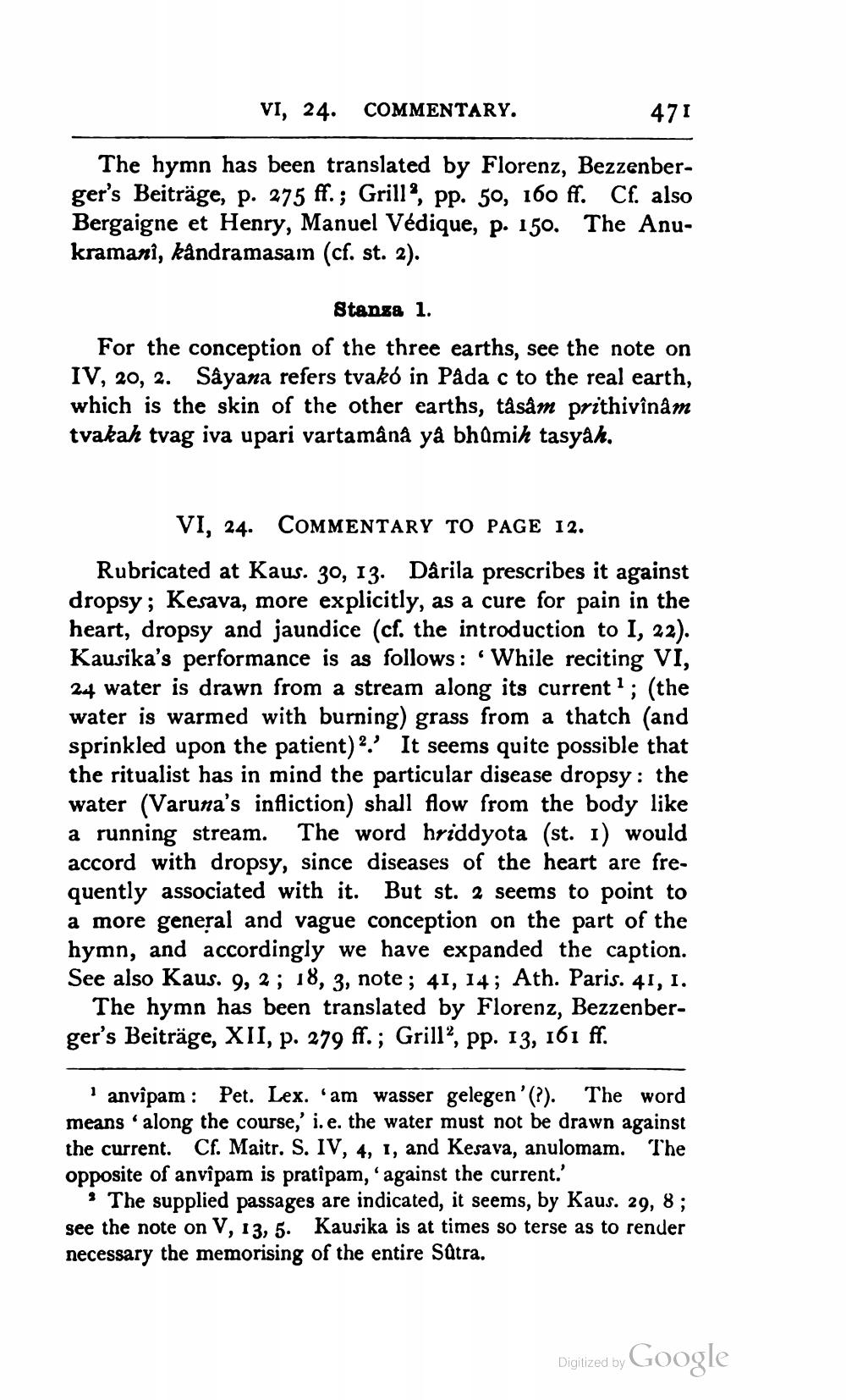________________
VI, 24.
COMMENTARY.
471
The hymn has been translated by Florenz, Bezzenberger's Beiträge, p. 275 ff.; Grill, pp. 50, 160 ff. Cf. also Bergaigne et Henry, Manuel Védique, p. 150. The Anukramanî, kândramasam (cf. st. 2).
Stanza 1.
For the conception of the three earths, see the note on IV, 20, 2. Sâyana refers tvakó in Pâda c to the real earth, which is the skin of the other earths, tâsâm prithivînâm tvakah tvag iva upari vartamânâ yâ bhûmih tasyâh.
VI, 24.
COMMENTARY TO PAGE 12.
Rubricated at Kaus. 30, 13. Dârila prescribes it against dropsy; Kesava, more explicitly, as a cure for pain in the heart, dropsy and jaundice (cf. the introduction to I, 22). Kausika's performance is as follows: 'While reciting VI, 24 water is drawn from a stream along its current1; (the water is warmed with burning) grass from a thatch (and sprinkled upon the patient). It seems quite possible that the ritualist has in mind the particular disease dropsy: the water (Varuna's infliction) shall flow from the body like a running stream. The word hriddyota (st. 1) would accord with dropsy, since diseases of the heart are frequently associated with it. But st. 2 seems to point to a more general and vague conception on the part of the hymn, and accordingly we have expanded the caption. See also Kaus. 9, 2; 18, 3, note; 41, 14; Ath. Paris. 41, I.
The hymn has been translated by Florenz, Bezzenberger's Beiträge, XII, p. 279 ff.; Grill2, pp. 13, 161 ff.
1anvîpam: Pet. Lex. 'am wasser gelegen' (?). The word means 'along the course,' i. e. the water must not be drawn against the current. Cf. Maitr. S. IV, 4, 1, and Kesava, anulomam. The opposite of anvîpam is pratîpam, 'against the current.'
The supplied passages are indicated, it seems, by Kaus. 29, 8; see the note on V, 13, 5. Kausika is at times so terse as to render necessary the memorising of the entire Sûtra.
Digitized by
Google




